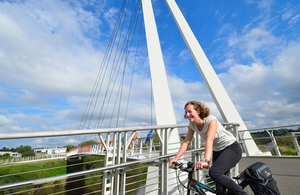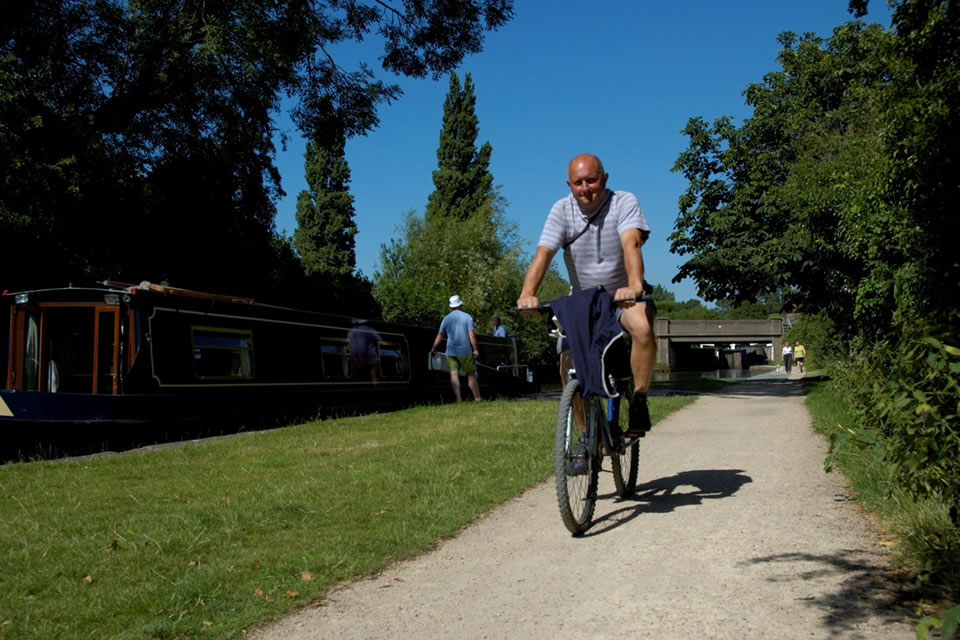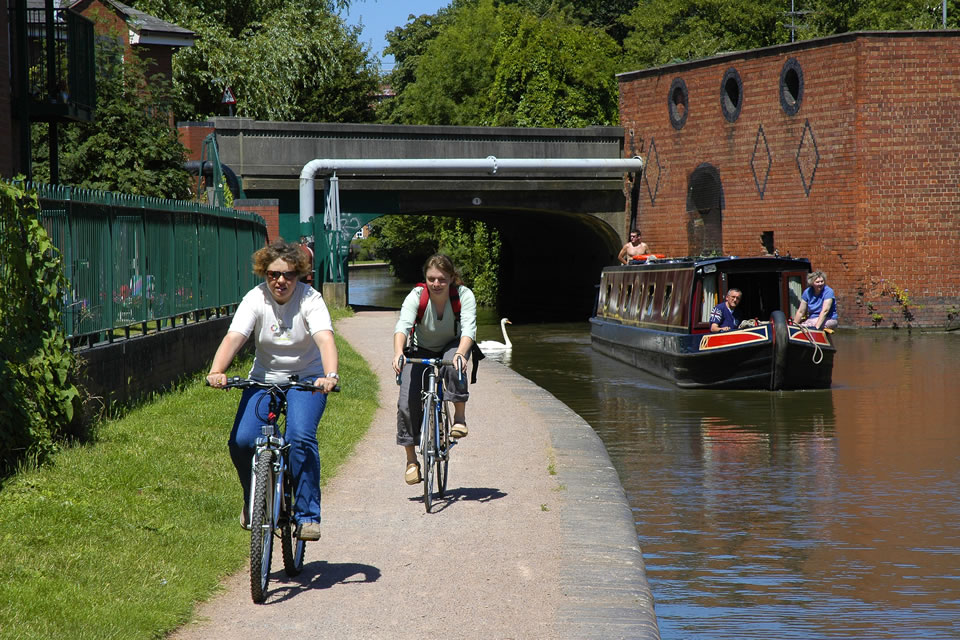Building a bridge for cyclists and pedestrians in Worcester
How Worcester city and county councils have built the Diglis Bridge to make it easier for people to get around on foot and by bike.

Diglis Bridge for cyclists and pedestrians over River Servern at Worcester
What we did
Worcester city council and Worcester county council built a striking new bridge over the River Severn that makes it easier for people to get around Worcester on foot and by bike.
The bridge has overcome a major barrier for cyclists and walkers and has been a key factor in developing a town-wide network of signed routes.
The scheme was developed as part of Sustrans Connect2 programme, funded through the BIG Lottery. Being part of a programme of national significance helped to bring in additional funding to the wider scheme. This extended the traffic-free network to the north of the city alongside the Worcester and Birmingham Canal, linking to employment, leisure and educational centres.
Small but crucial improvements were made to links across the city to extend the network of routes, radiating from Diglis Bridge, including new stretches of traffic-free path, toucan crossings and signing.

Cycle path beside canal in Worcester.
Why we did it
Busy and congested roads made getting around Worcester difficult. The poor quality of links between the west and the east of the city was a major concern, and there was no safe route for cyclists and pedestrians between the city centre and neighbouring communities. The riverside area of the city needed redevelopment to turn it into a focal point for residents and tourists. The installation of the bridge was to play a key role in that.
The riverside is a very important part of the tourism industry in Worcester. We’re experiencing a real benefit and I’m sure other businesses near the route have seen an increase in business, too. There’s been at least a 20% increase in our bar and restaurant sales and we also think the new route will increase our hotel figures in the future, as it brings more walkers and cyclists to the area.
Steve Pirone, General Manager of the Diglis House Hotel in Worcester.
The improvements have opened up the riverside and made it easier to cycle or walk to work, to school or for leisure trips. Diglis Bridge has become an iconic part of the Worcester skyline and has been recognised by the European Greenway Association as an excellent example of good practice in design, technical execution and impact for residents.
How we did it
Political buy-in was crucial. Both Worcester city council and Worcestershire county council cabinets supported the scheme, along with councillors at district and county levels.
Stakeholders agreed a comprehensive brief for the bridge (location, deck width, lighting type, etc) before the funding was in place. This ensured that the contract to design and build the bridge ran smoothly and on schedule.
We established a stakeholder steering group, which included representatives from the councils, the local community, schools and businesses, to oversee the project. This provided a platform for community representation as part of the scheme, working hand in hand with the scheme sponsors and funders (Sustrans) and the local authority delivering the scheme.
The steering group also provided a platform for key stakeholders such as British Waterways and the Environment Agency, whose co-operation was crucial. This approach brought other rewards through the use of stakeholders’ land and, in the case of the Environment Agency, the construction of a length of the network.
New paths were based on existing desire lines, ensuring they went where people wanted them. They were made as wide as possible to cater for any increase in use.

Canal towpath cycle route.
What we learned
The new bridge has been a key factor in the development of a cycling and walking network in Worcester, allowing further improvements to be made within the city. It was a standalone project as well as fitting into longer term plans for the city.
Usage of the first section of the route to be built showed there to be greater demand for trips further north than originally expected and the plans were re-jigged to accommodate this.
Before it was built, surveys indicated we could expect about 31,000 trips annually to pass the west bank riverside where the bridge was proposed. Surveys after the bridge was built gave a figure of 465,000, showing just how important the intervention is to the area. Convenience was a major factor in people using the facility – 90% of users said they used the bridge because it was the most convenient option.
Businesses such as shops, bars and hotels in the vicinity of the routes have seen increased takings, whilst a group of Sustrans volunteers have established a sociable regular get-together open to all, but especially aimed at those who haven’t cycled for some time because of not knowing where the safe, convenient routes are.
Diglis Bridge also provides opportunities for increasing levels of activity, in particular for more hard to reach groups, such as novice cyclists and families, who are often not the target of schemes associated with the highway alone.
Local resident:
As a busy mum with a young family, it can be hard to find the time to find exercise. Cycling is something I can do at any time when the opportunity arises. The new bridge and cycle paths mean I can cycle a circular route around much of Worcester, most of which is on cycle paths or quiet roads and I therefore feel safe.
Contacts and further information
For more information:
- email Lynsey Keir, Sustainable Schemes Team Leader, on LKeir@worcestershire.gov.uk
- watch an 8-minute video on the building of Diglis Bridge
- watch a 2-minute video on the building of Diglis Bridge